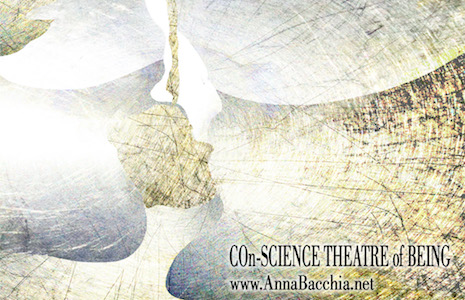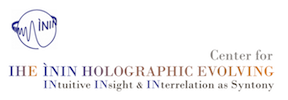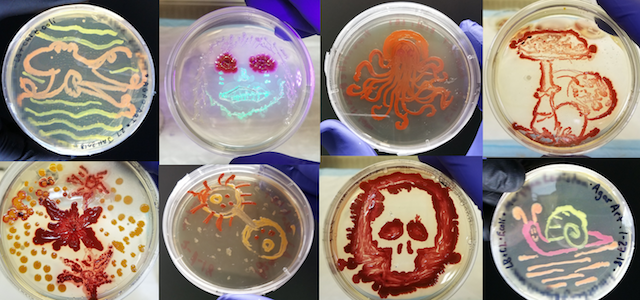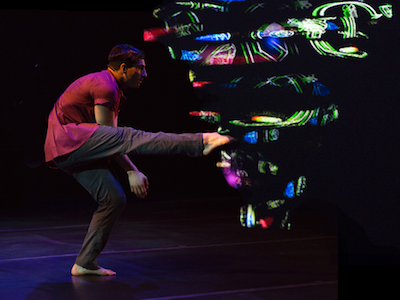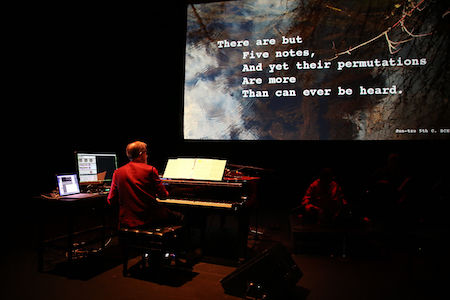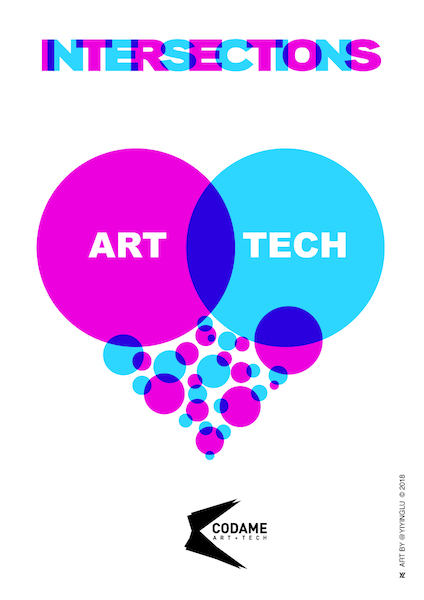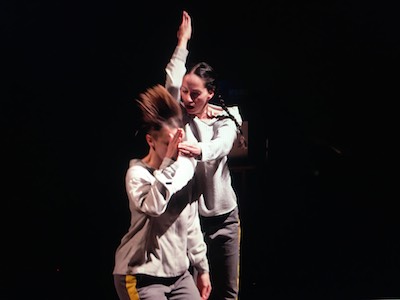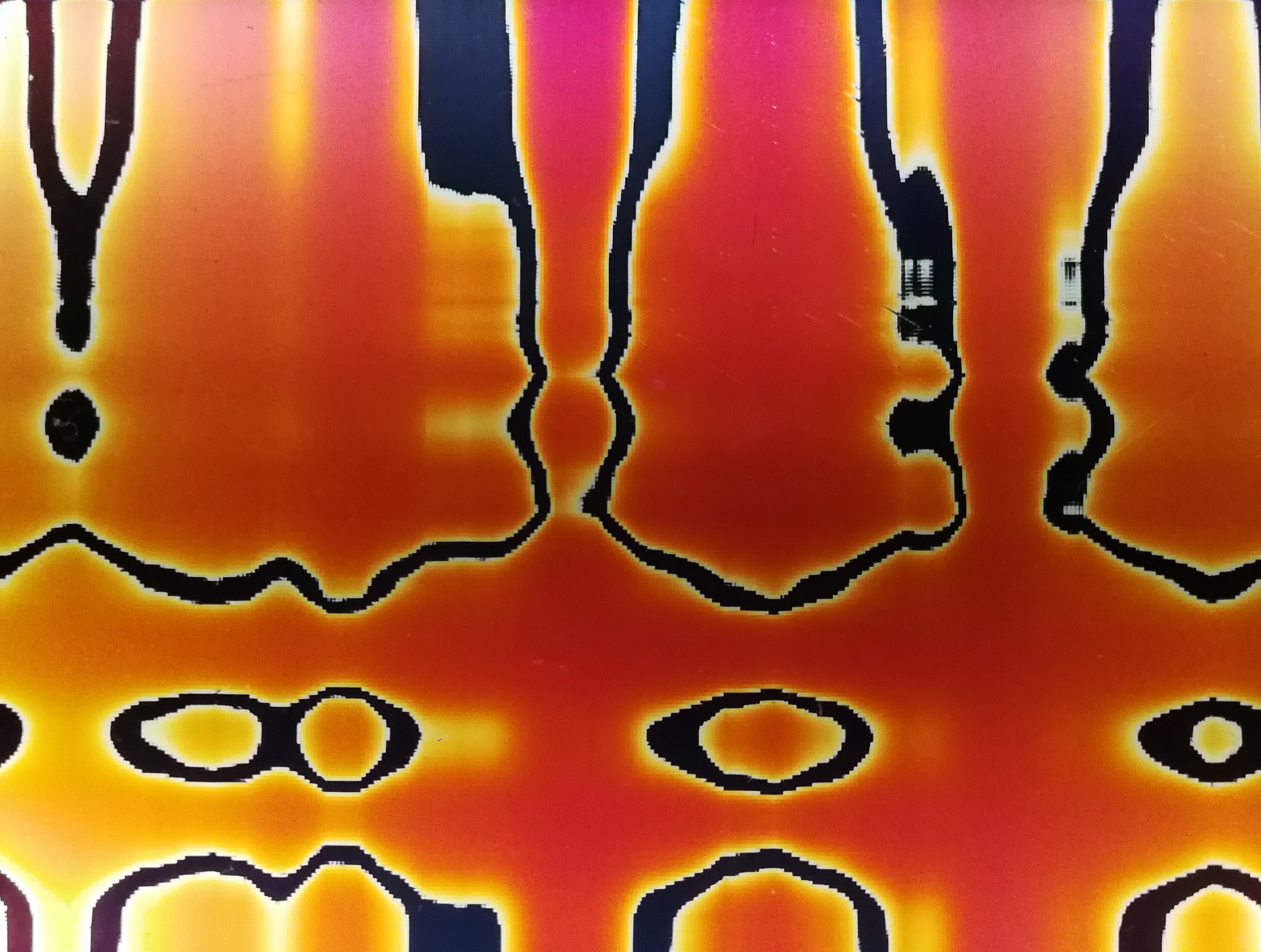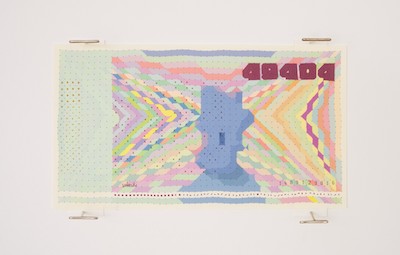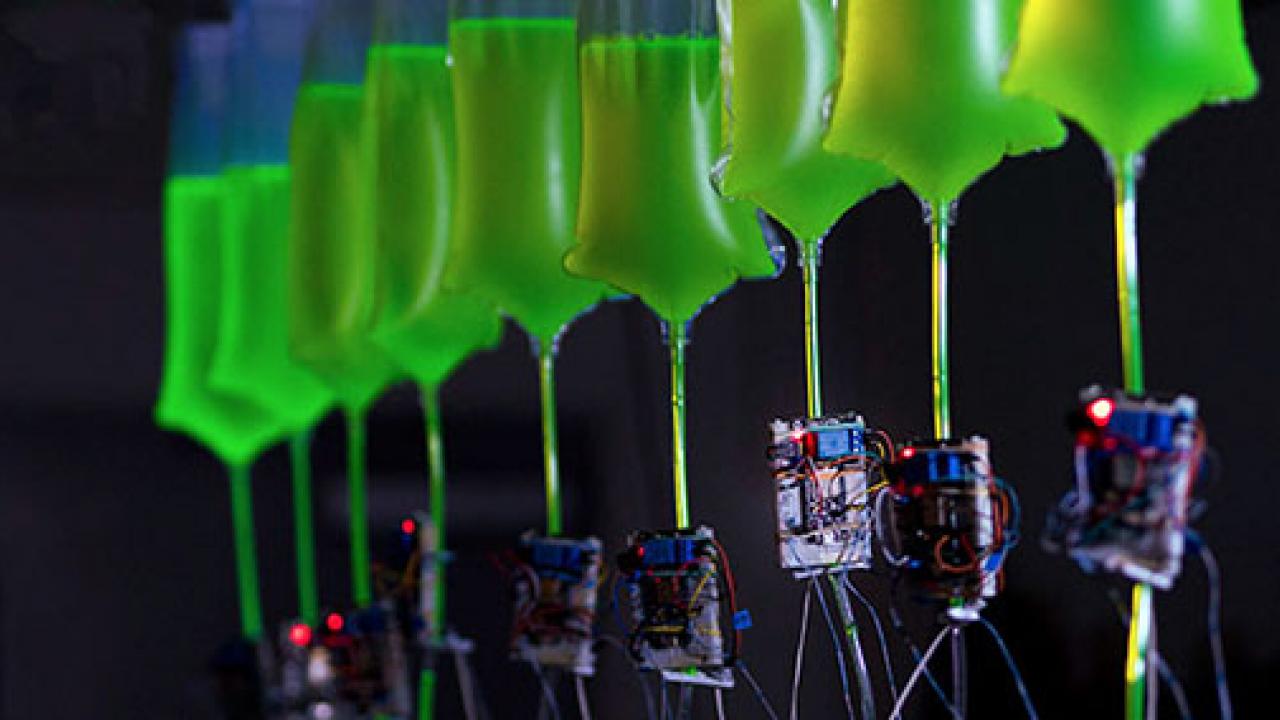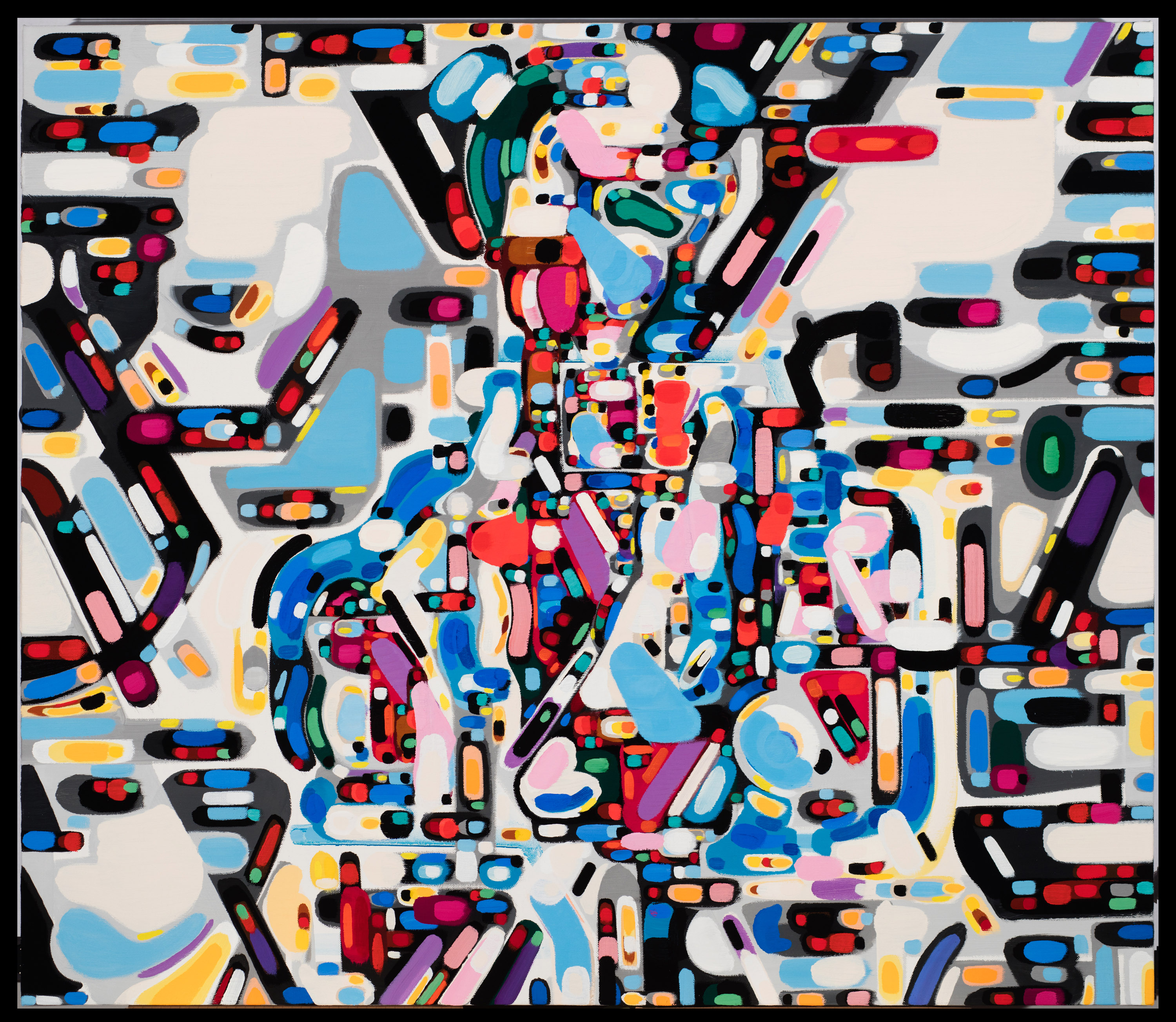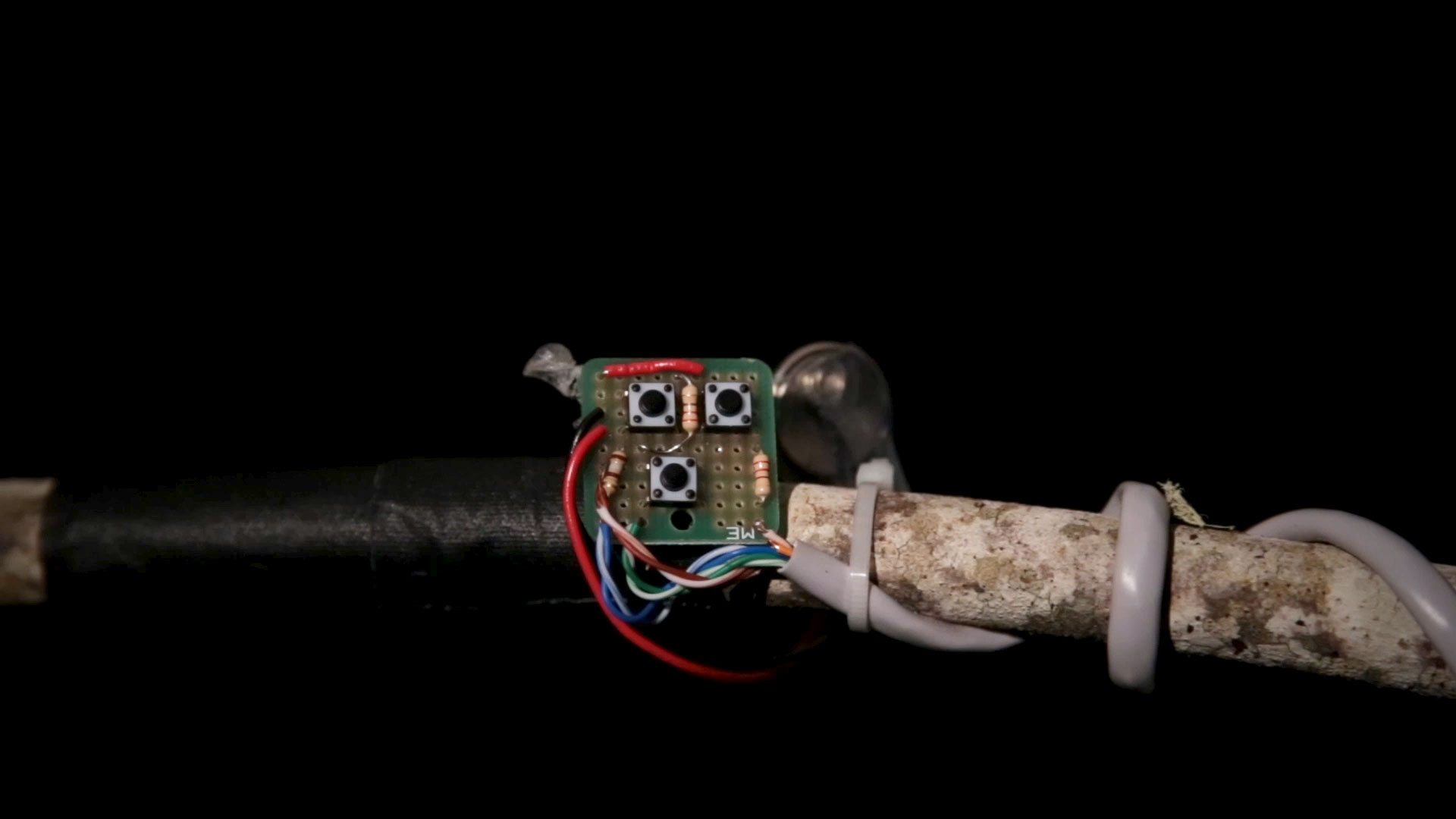
Program
SATURDAY (Nov 3) AND SUNDAY (Nov 4) PROGRAM DETAILS
Saturday Morning
PERIPATETIC CONVERSATIONS
Convening attendees are invited to join in one on one conversations initiated by open-ended questions. The power of slowing down to contemplate and express your own ideas and then, in turn, closely listen to the perspective of your conversational partner will help set an empathetic tone for subsequent activities. Participants will make individual selections of cards containing several key questions on themes relevant to the Convening. The suggestion to walk (hence, peripatetic) during the conversation is to help support the sense that any conversation can be a journey and exploration of ideas and new perspectives.
The activity was developed by Claire Pillsbury, Program Director, and Kirstin Bach, Program Manager, Center for Art & Inquiry in collaboration with Marina McDougall, Founding Director, Center for Art & Inquiry (staff and alumna of the Exploratorium).
Keynote
THE FUTURE OF INNOVATION AT THE INTERSECTION OF ART AND TECHNOLOGY
Do you ever wonder why there is so much difference in the world between people, culture, race, religion, politics? Our ability to communicate with others via text, voice and visuals is severely limited because those modes of communication do not transmit emotion or transfer empathy. Furthermore, the ability of humans to sense the world is severely limited because our senses operate at a fraction of the animal kingdom. What if we could use technology to break down barriers between people? What if we could use technology to augment our senses and effectively create a 6th sense to enable greater perception of the world around us, to make visible the invisible signals that allude us and to enable empathic communication between people so as to deepen interpersonal understanding? In this talk I will share how we are collaborating with the artistic/creative community to create a new language of empathic communication to break down these barriers. I will share examples of these collaborative works and share a vision for the future of innovation at the intersection of art and technology.
Presented by Domhnaill Hernon Head of Experiments in Arts and Technology (E.A.T.) at Nokia Bell Labs.
EXPERIENCES
This day will encompass a set of transdisciplinary experiences from sources ranging from small art/sci collaborations to institutional, academic and corporate innovation. Each attendee will be able to attend 2 experience sessions. Each session is 75 minutes.
Citizen Sticks
CitizenSticks is an experience platform for visualizing and sharing public opinion conceptualized by pioneering artist Joel Slayton in collaboration with Steve Durie, Emily Bright and Garrett Belieu.
From the family room to boardroom, from museum to retail store, from panel- discussion to the political convention, CitizenSticks promote critical dialog and inspire cooperative action. Shake, wave, point and draw in the air, discover meaningful gestures of public expression and communication. CitizenSticks provide a social experience platform for:
• Expressing individual opinion and experiencing the opinions of others
• Catalyzing public conversation on specific themes, issues or subjects
• Representing participant interactions in real time
Joel Slayton “In-Conversation” with Margot H. Knight – Executive Director of the Djerassi Resident Artists Program as they examine some of the challenges and opportunities for the arts in this next 50 years.
COn-SCENCE THEATRE of BEING : ART r-Evolution
Through her unique and innovative Art of "giving voice" to the ineffable, Anna Bacchia leads us to experience the shift from logical thinking into an unexplored ana-logical intuitive envisioning, which brings about a complete r-Evolution of all our communication. An extraordinary key to future creative perspectives, to a coherent inspiring co-evolving and co-habiting the Earth.
Team: Anna Bacchia (Project Initiator, Artist, Researcher), Enrica Bacchia (Vocalist, Visual Artist), Roman Calzaferri (Production Manager & Artistic Consultant), Eric Tornaghi (Technical Director), Giovanna Fiore (Production Assistant, Video Documentation).
Art in a Petri Dish
Vortex Workshop
This workshop is based on The Vortex, a performance that explores the lived experience of scientists who are women, people of color, and/or gender nonconforming, conducting research within a traditionally white male work culture. In this workshop, we will share brief excerpts from the performance and involve participants in the creative process used by the Vortex collaborators: choreographer Donna Sternberg and her company, geobiologist Dawn Sumner, and visual artist Meredith Tromble. To develop the evening-length work, they collected true stories from more than two dozen scientists; as part of the workshop, we will invite true stories from the participants and play together with developing visual and movement imagery from them, together.
Presented by Meredith Tromble , Donna Sternberg and Dawn Sumner.
Nothingness Is Unstable
Nothingness usually collapses into something-ness—the phenomenal particularities of experience. Musical particularities containing temporal fine structures with created pasts and futures spring from initially undefined singularities of experience into multiple dimensions of mutual interactivity. In Nothingness is Unstable, life-form sounds collected in Indonesia and the US are articulated by large banks of complex digital resonator circuits, shaped by performing actions with analog acoustic and electronic sources, and diffused into space with multi-dimensional sound algorithms to create an immersive musical wrapping. Visual projections from A Summary History of Humans in the World and Natural Scores encourage reflecting on the nature of our emergent present. In The Experiment, a scene from Hopscotch, a mobile opera for 24 cars produced by The Industry in Los Angeles in 2015, multiple voices swirl in sound space while being mixed according to spectral elements measured in the collective group brainwaves of audience volunteers, who will be listening to questions sung by the character of an investigator probing the nature of mind.
Notes: This will be an intimate performance/presentation with opportunities for selected audience participation and subsequent discussion.
Incorporating Identity in Art and Technology Education
This workshop introduces approaches for the educational design and facilitation of experiences in art and technology, using the driver of each student’s culture. Participant educators will learn how to incorporate storytelling through technology-based exercises, methods for facilitating inclusive discussions on current issues, and a variety of tools to overcome the intimidation of new technology.
This workshop will be taught over two sessions. The first section will give an overview of curriculum development and facilitation techniques including and tips on how to choose the right tools to support all levels of expertise. In the second section, groups will do an example exercise incorporating these techniques while learning how to create a speculative artifact using web technologies including HTML, CSS & JS.
The second section will model the pedagogical approach of providing support for all levels of expertise. Computers will be provided though laptops are encouraged.
Presented by educator/artist Matt Ganucheau.
INTERNATIONAL WOMEN'S PANEL
Around the world, placemaking starts the intersection of art, science, and technology. Women are leading the transdisciplinary movement internationally. The panelists providing a vision for the future within their cultures and playing a critical role in the global art, science and technology movement. The individuals on this panel have particularly contributed to the greater Leonardo network within this past year through by organizing celebrations and discourse for the Leonardo members in their own local communities.
Panelists:
Jadwiga Charzyńska, Director Laznia Centre for Contemporary Art Gdańsk, Poland.
Luz María Sánchez Cardona, Ph.D. Department of Arts and Humanities, Chair Universidad Autónoma Metropolitana, Lerma Campus.
Anna Frants, Director/Founder of Cyland Media Lab Saint Petersburg, Russia
Moderated by Diana Maria Gallichio Domingues, LART Founder and Director Laboratory of Research in Art and TechnoScience
CNPq Researcher (National Council for Scientific and Technological Development) Senior Collaborator Professor at the Graduate Program in Biomedical Engineering FGA and at the Science and Technologies in Health Program – FCE – University of Brasilia Research Collaborator at the Institute of Computing – University of Campinas – UNICAMP Brazil
SATURDAY EVENING PRESENTED BY CODAME ART + TECH
In “Intersections,” CODAME showcases work that defies boundaries: Where art meets technology, experiment and play collide, and new media wander curiously in the footsteps of old. Featuring gallery installations, screenings, and performances, Intersections explores the surprising, inspiring, and challenging crossings of art, science, and technology as part of the Leonardo Convening.
What is the purpose of creative vision in a world dominated by science and technology? Though commonly thought to inhabit distinct worlds, the “two cultures” of art and science have long collaborated for common purpose. Motivated by deep curiosity, imagination, and a shared sense of wonder, artists and scientists ask questions of the material world. How does it work? Why does it matter? What happens if…? In light of recent environmental and technological developments, these questions take on a renewed urgency. Animated by Leonardo’s 50-year commitment to building bridges across disciplines, at Intersections we explore several overlapping themes that have emerged over these decades of artistic and scientific collaboration.
The works in Intersections examine the interrelationship of humans and our environments, whether organic or algorithmic. They envision and reimagine human activity in the strange, curious, wonderful, and perplexing cauldron of existence. From the microscopic to the gigantic, the tangible to the ephemeral, we share our world with a thriving universe of atoms, data, bacteria, and code.
In Intersections, we invite you to touch, listen, watch, and feel the profound transformations we have wrought upon our living world, and that world upon us. Come journey with us through the particle accelerator, the network, the camera lens, the data cloud, the waterway, and the algal bloom.
Note: "Intersections" is included in Convening ticketing. However, if you would like to attend the evening only separate ticketing is available with this link.
Selected Leonardo artists below. For a full list of presenters and performers for the evening see the program list on the CODAME website.
Performance - “1945 - 2015” by Kinetech Arts
Photographer: Weidong Yang
Pictured: Daiane Lopes da Silva and Tanja London
This project is supported by the Djerassi Resident Artist Program.
“1945 - 2015” follows the development of scientific data regarding climate change in a metaphorical and concrete manner. It is the second part of a three movement series, which focuses on the human centric paradigm that has dominated the last centuries. From 1945 to 2015, the amount of carbon in the atmosphere rose 8.4 times, the population grew 3 times and human land use increased to 39%.
This piece is a collaboration between The ClimateMusic Project, composer Richard Festinger, and Kinetech Arts with choreographers Daiane Lopes da Silva and Tanja London.No 0. by Anna Frants
Photo by Michael Borisov, 2017
“No. 0” is modular, 3D Public Art installation from the artist’s series, “Explosion of a Can of Condensed Milk After Water Has Evaporated”. Conceptually referencing a computer grid and visually reflecting the infrastructure of a building sans walls – Frants builds an open framework room.
This installation is sponsored by the Cyland Media Lab.
Comprised of raw polypropylene cubes, the exposed framework houses objects, videos, and movements. The interior (unlived-in lived-in) space is empty for viewers to navigate the visuals, sounds, words, and virtual actions of the exterior matrix and formulate their own story. Birds chirp, recorded faces communicate, playful toys whiz and whirl, the seas ebb and flow – each with brand names that they are sold as or known by as characters in Frants’ theatrically staged work and beyond.
Liquid Loom
Block Bills
by Matthias Dörfelt sponsored by the Lumen Prize.
What Does the Bot Say to the Human?
Atomic Cinema
by Steven J. Oscherwitz
The Young Person's Guide to a Children's Hospital: Texture Technology and Total Architecture
Screening by Felicia Cleper-Borkovi Principal at ARUP
As healthcare scientists, artists, and technologists we are constantly exploring ways in which hospital environments can fuel the imagination of patients. We insert extensions of everyday life at the heart of hospitals as points of reference for patients and their families that evoke associations with their sense of identity before the crossing of the hospital’s threshold. With the help of technologies and multi-sensorial clues - acoustical, lighting, textural, and visual - we let young people imagine connections to familiar companions and surroundings with which they are comfortable: their room at home, their backyard, the park, their school, their street. With Clayton Hagy as protagonist, we will present a short film about Packard Children’s Hospital at Stanford as seen through the eyes of a young person. It is by listening to expert voices such as Clayton’s that multi-disciplinary design teams can mobilize technology to create acoustical, visual, and lighting textures that humanize the hospital experience. This is what was envisioned by Sir Ove Arup, 47 years ago, when he praised the aspiration for 'Total Architecture' and said that great things can result when "all relevant design decisions have been considered together and have been integrated into a whole by a well-organized team".
Branches from the Same Tree
Presented by Ashley Bear Program Officer and Study Director at the National Academy of Sciences.
This session will provide attendees with an overview of the National Academies study: Branches from the Same Tree. This study examined an important trend in higher education: integration of the humanities and arts with sciences, engineering, and medicine at the undergraduate and graduate level—which proponents argue will better prepare students for work, life, and citizenship. Integrative models intentionally seek to bridge the knowledge, modes of inquiry, and pedagogies from multiple disciplines—the humanities, arts, sciences, engineering, technology, mathematics, and medicine—within the context of a single course or program of study. This movement in higher education raises an important question: what impact do these curricular approaches have on students? To address this question, the National Academies formed a committee to examine “the evidence behind the assertion that educational programs that mutually integrate learning experiences in the humanities and arts with science, technology, engineering, mathematics, and medicine (STEMM) lead to improved educational and career outcomes for undergraduate and graduate students.” The committee conducted an in-depth review and analysis of the state of knowledge on the impact of integrative approaches on students. In this session, the study director, Dr. Ashley Bear, will offer an overview of the report's findings and the committee's recommendations for higher education.
From Steam to Fusion to Alchemy
Presented Sha Xin Wei, Director of Synthesis Arizona State University
Pursuing fundamental inquiries such as movement as thought, textural rhythm, non-anthropocentric art, ethico-aesthetic experiment, calls for neither juxtaposing nor opposing the arts and sciences, but fusing and transmuting them. Five centuries ago, alchemy was a practical and symbolic art, regarding bodies and materials always suffused with ethical, vital and material power. Under the prism of the Enlightenment, alchemy split into the practical (e.g. engineering or medicine), the scientific, and the art of the imaginary. Synthesis fuses these arts as a second-order alchemy, transmuting our own disciplined ways of doing things, with care.
FUTURECASING - BUILDING MANIFESTOS WORKSHOP
Participants will gather for a facilitated daylong future-casting workshop focused on the transdisciplinary movement as a whole and its relationship to society. This may result in a manifesto or multiple manifestos, new collaborations and a new vision for Leonardo. We are not merely an organization that serves to gather and publishes ideas, but rather a response to global voices at the intersection of art, science and technology. We are a network of villages and our future depends on your voice.
The workshop will provide documentary material that has been gathered from the many meetings and 50th celebrations over the past year. This material represents, to an extent, the views, hopes, frustrations and suggestions of the wider art/sci/tech community. During the day we will break into small groups to consider this material and to express our own views on possible futures for Leonardo. The workshop will be facilitated so that by the end of the day each group will have produced a manifesto for the art/sci/tech movement that will be shared with the whole group.
What happens next? The manifestos will be presented to the Leonardo governing board the following day and will be the starting point for the organizational leadership to consider the immediate and long-term future of Leonardo. The workshop is an opportunity to reflect on complex challenges and transdisciplinary collaboration, to produce a manifesto in a day AND to help shape the future of Leonardo. Hope to see you there.
Facilitated by Future Strategist Alan Boldon, Founder and Director of Weave Global Labs and Kimberly Suda-Blake National Academies Keck Futures Initiative.
CEREMONY / WRAP UP
Master of Ceremonies Marc Hebert, Leonardo Board President
Re-presenting the Golden Nica by Gerfried Stocker artistic director ARS Electronica
Presentation of Citizen Sticks to Rob Semper Executive Associate Director at the Exploratorium
Special acknowledgment of Leonardo 50th Anniversary Chair Nina Czegedly and 50th Anniversary Global Hosts

